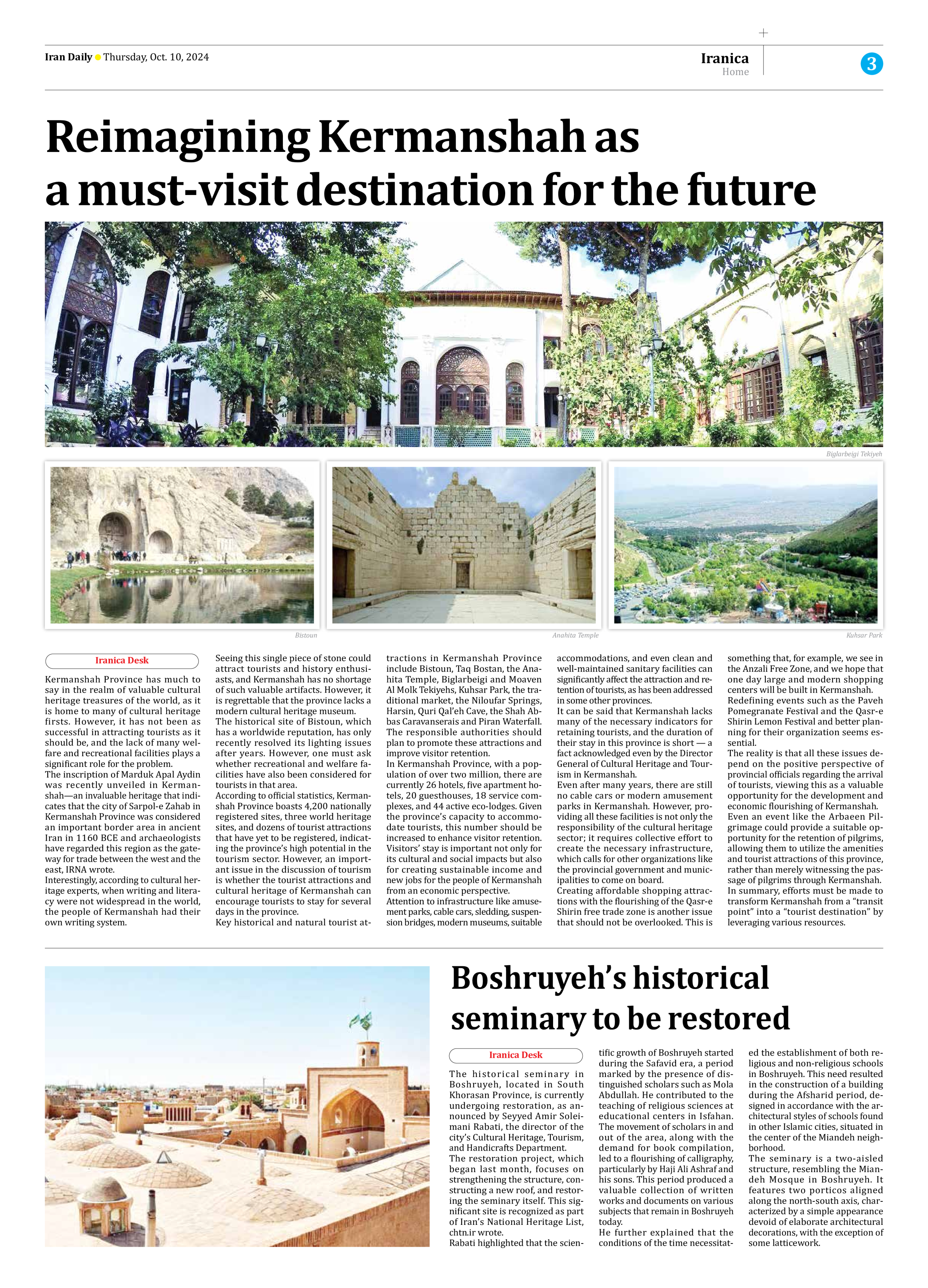
Boshruyeh’s historical seminary to be restored
The historical seminary in Boshruyeh, located in South Khorasan Province, is currently undergoing restoration, as announced by Seyyed Amir Soleimani Rabati, the director of the city’s Cultural Heritage, Tourism, and Handicrafts Department.
The restoration project, which began last month, focuses on strengthening the structure, constructing a new roof, and restoring the seminary itself. This significant site is recognized as part of Iran’s National Heritage List, chtn.ir wrote.
Rabati highlighted that the scientific growth of Boshruyeh started during the Safavid era, a period marked by the presence of distinguished scholars such as Mola Abdullah. He contributed to the teaching of religious sciences at educational centers in Isfahan. The movement of scholars in and out of the area, along with the demand for book compilation, led to a flourishing of calligraphy, particularly by Haji Ali Ashraf and his sons. This period produced a valuable collection of written works and documents on various subjects that remain in Boshruyeh today.
He further explained that the conditions of the time necessitated the establishment of both religious and non-religious schools in Boshruyeh. This need resulted in the construction of a building during the Afsharid period, designed in accordance with the architectural styles of schools found in other Islamic cities, situated in the center of the Miandeh neighborhood.
The seminary is a two-aisled structure, resembling the Miandeh Mosque in Boshruyeh. It features two porticos aligned along the north-south axis, characterized by a simple appearance devoid of elaborate architectural decorations, with the exception of some latticework.







